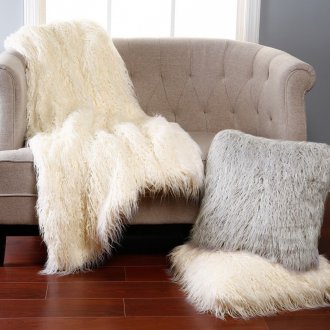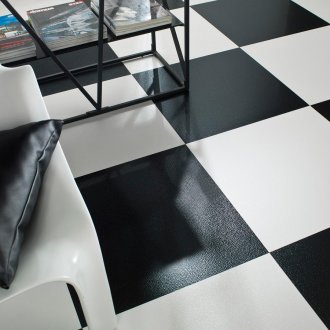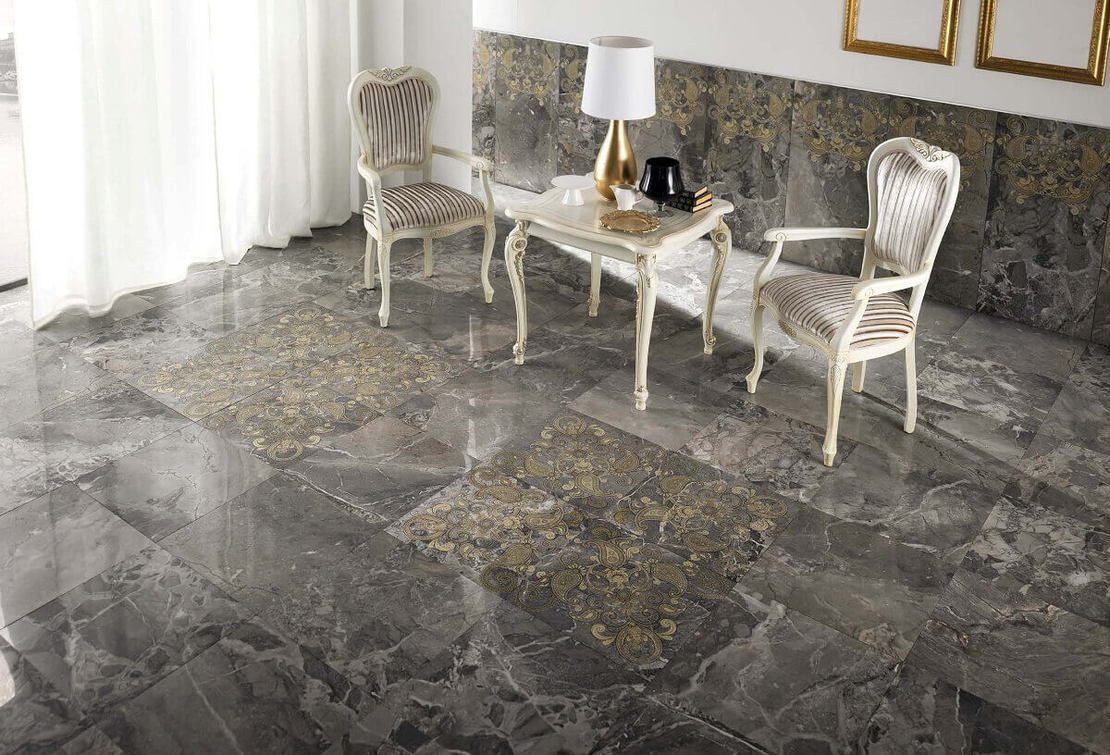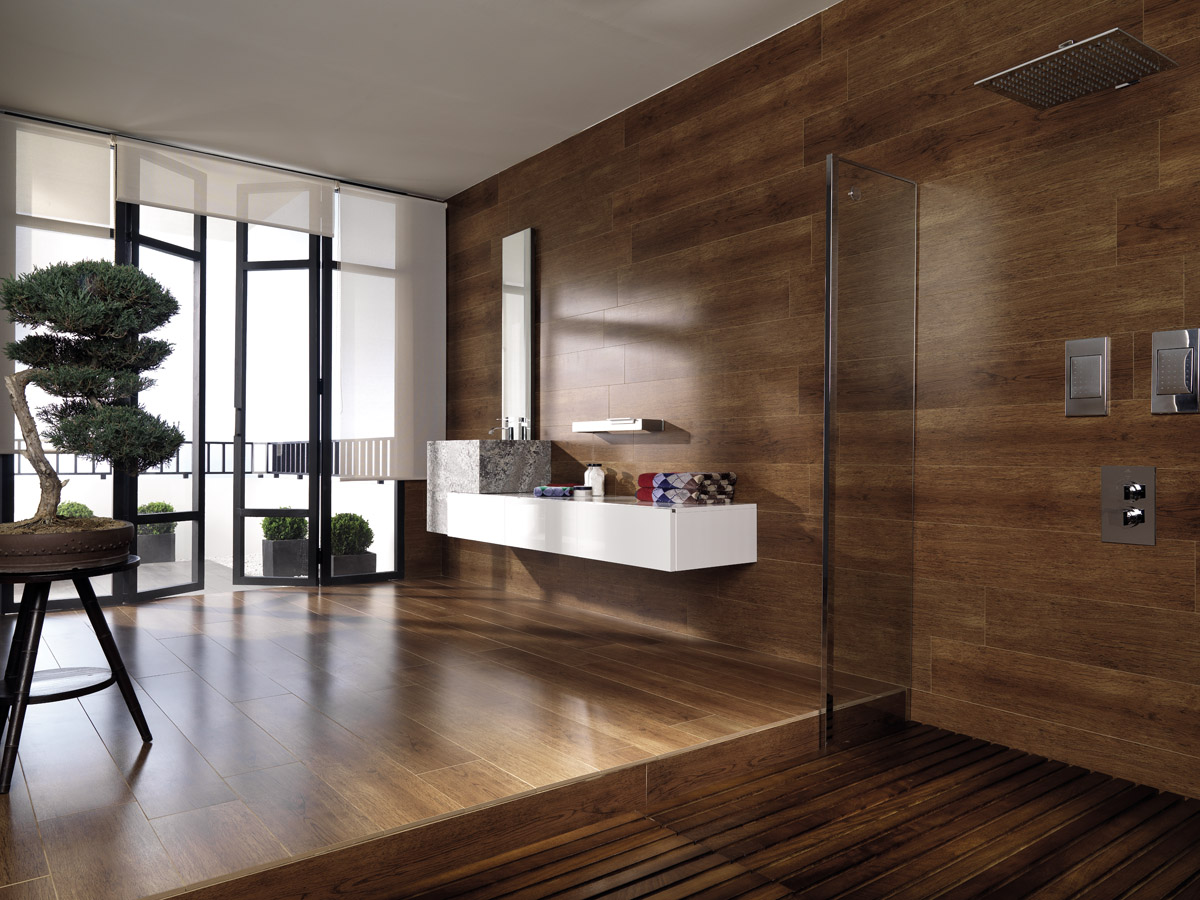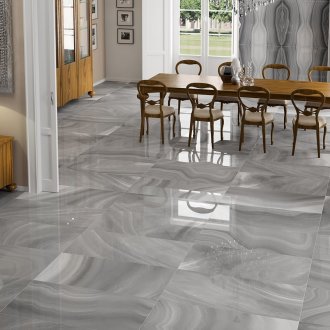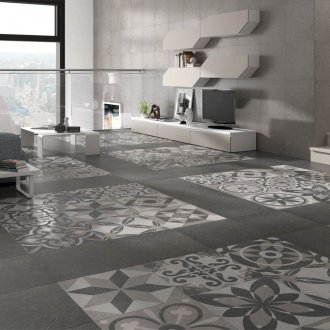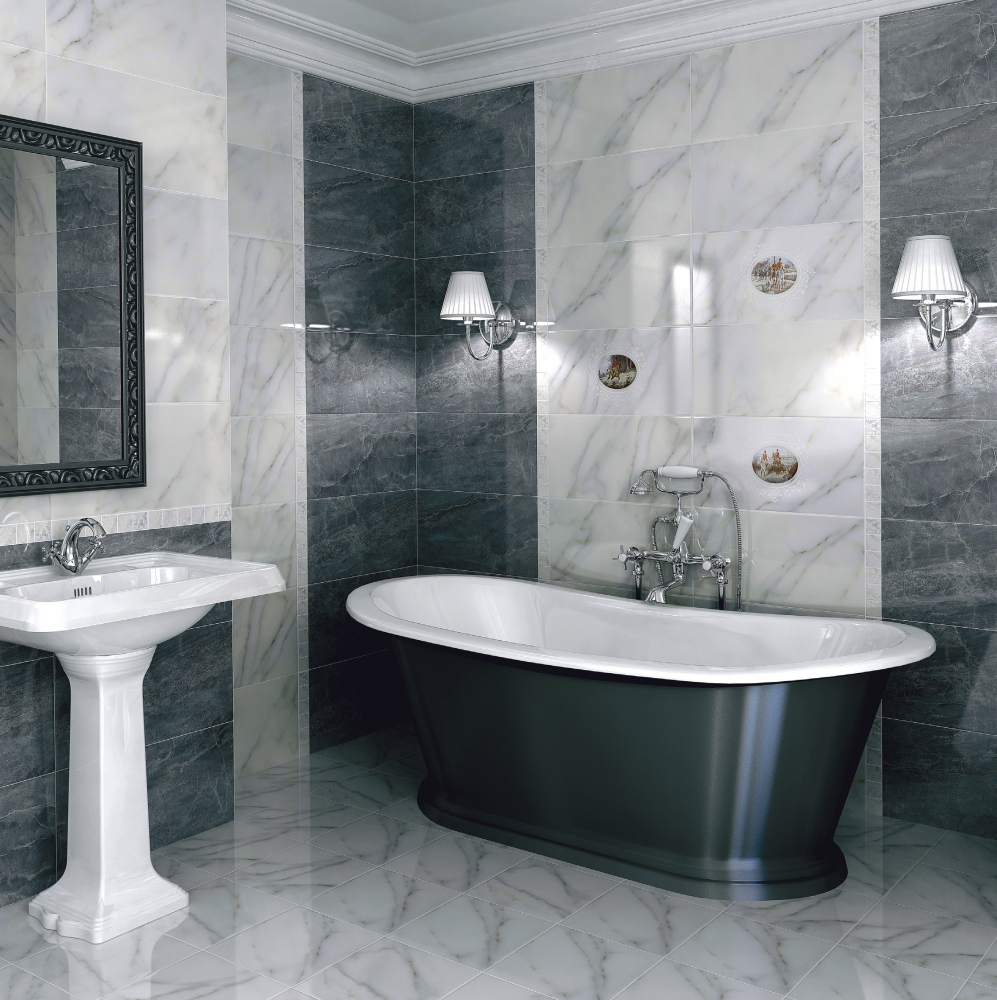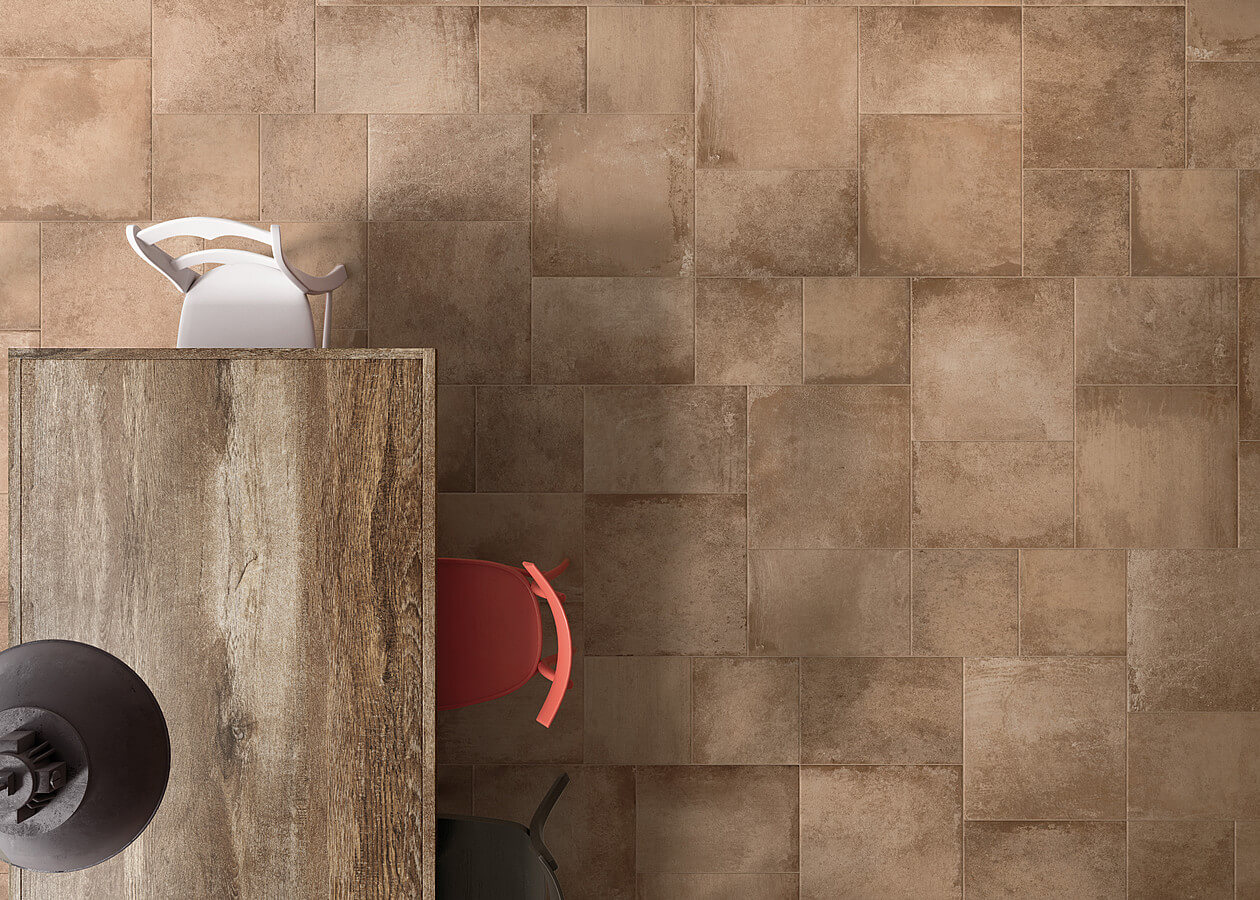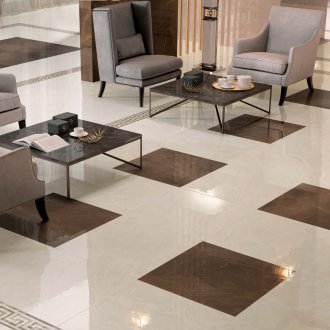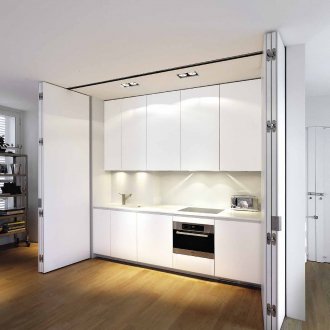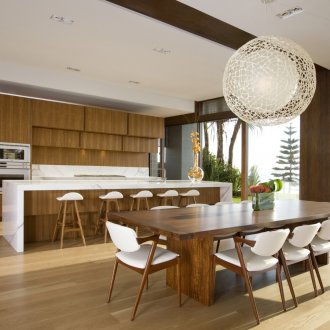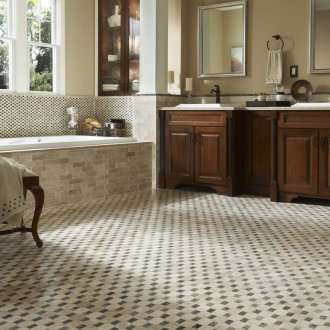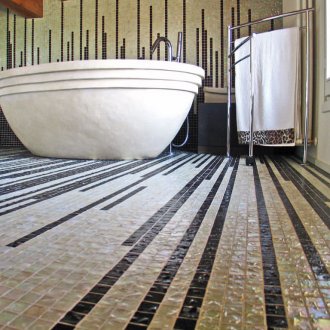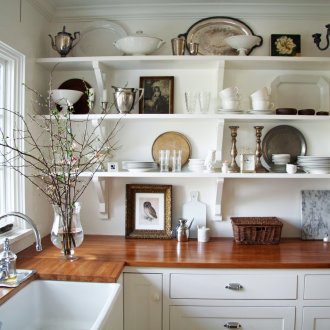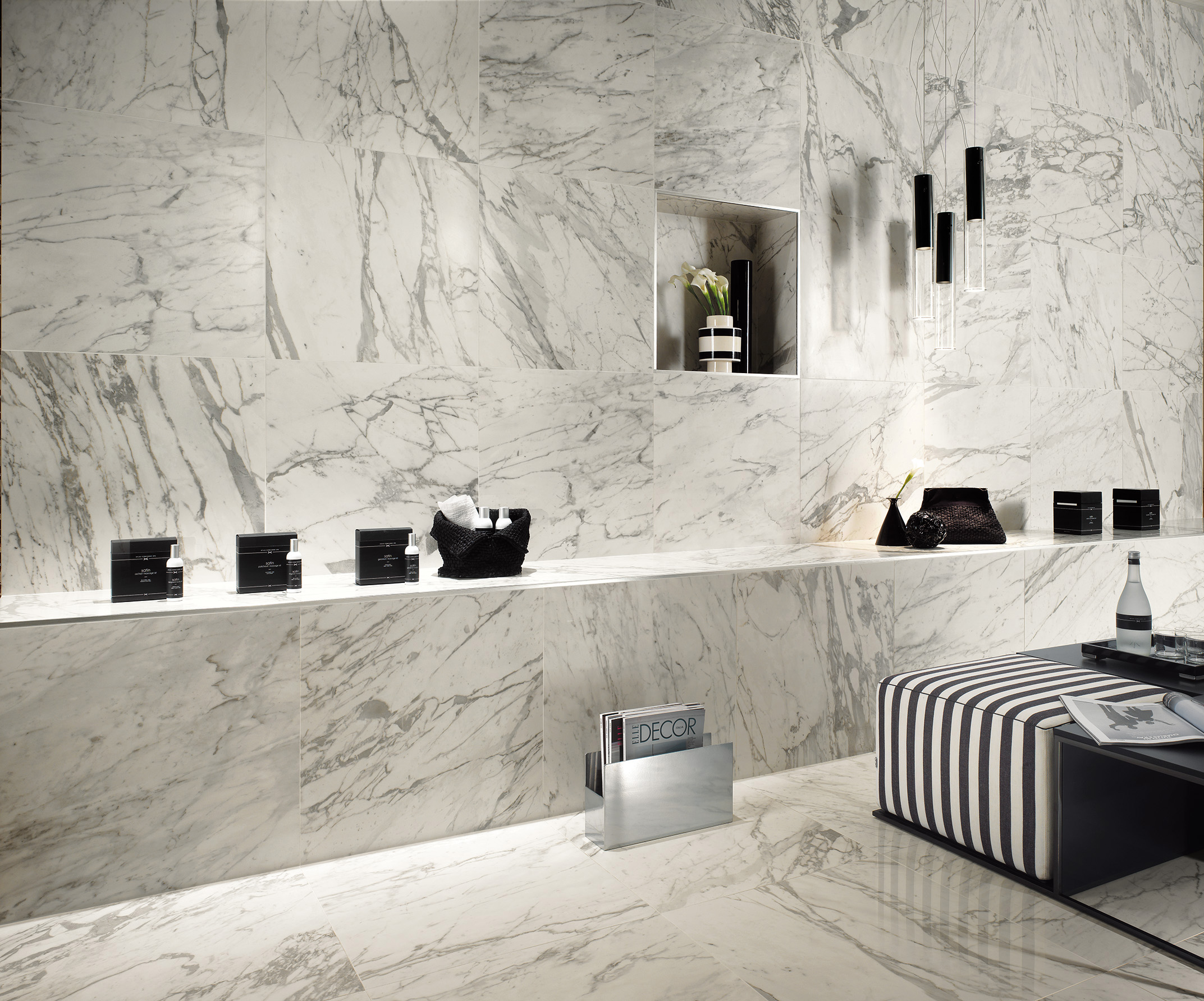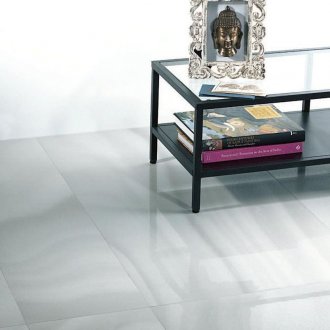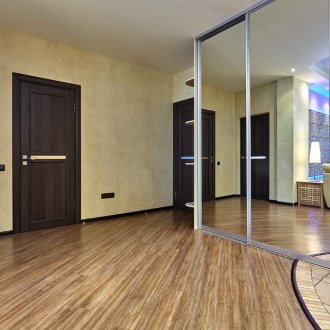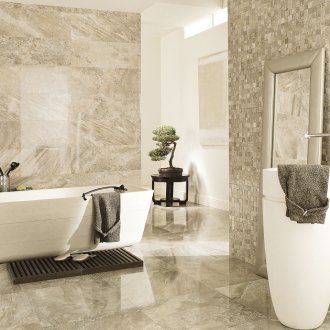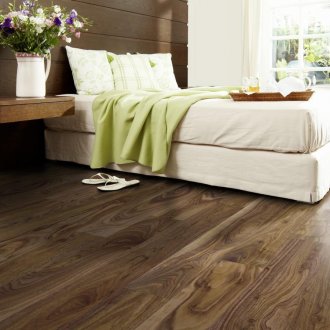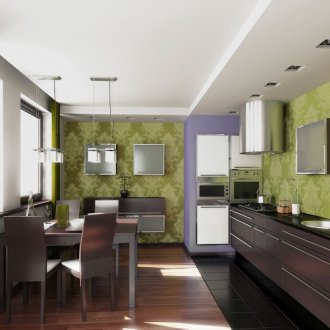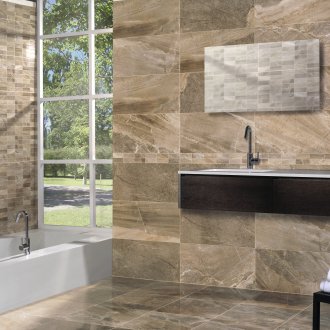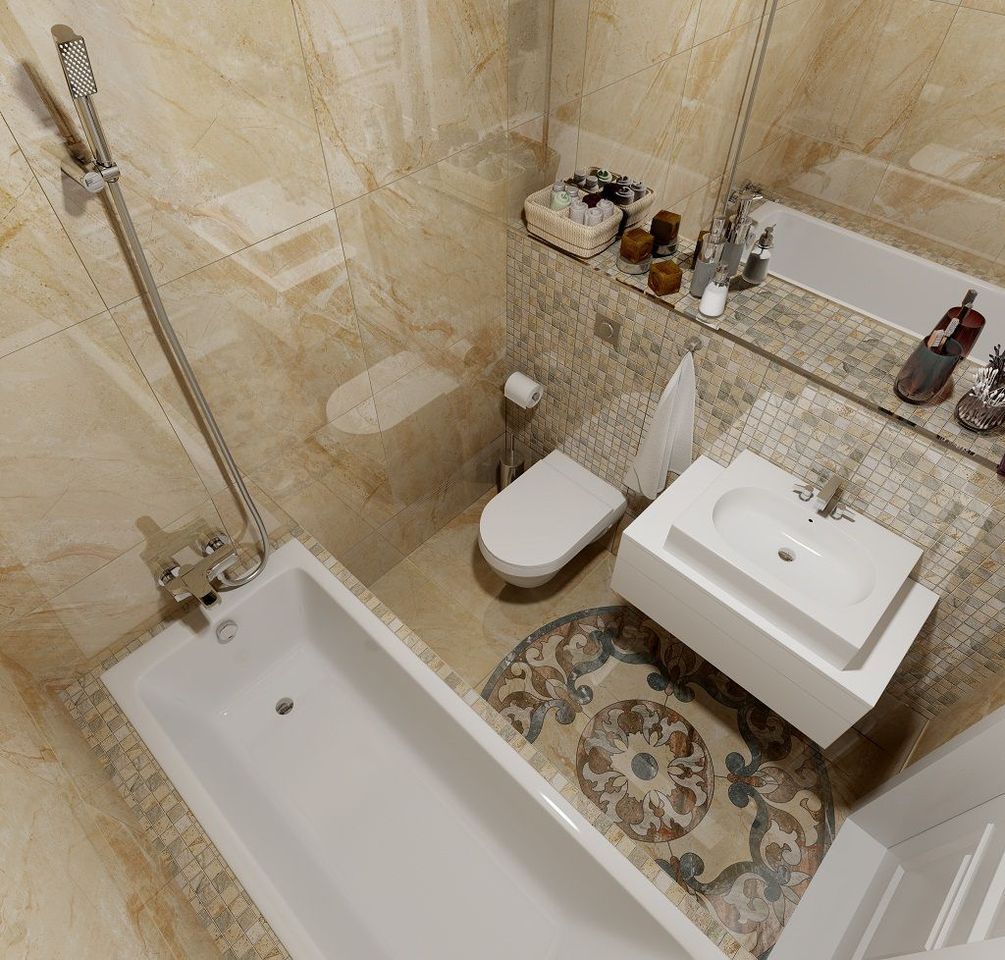Lappated tiles: what is it? (22 photos)
Content
Lappated tiles are porcelain tiles polished using a special technology. Its essence is that only part of the tile is subject to polishing, the rest of the surface remains unpolished, rough. As a result, the tile not only receives an interesting decorative effect, but also certain qualities.
How is porcelain tile produced?
Porcelain stoneware, from which lappated tiles are made, is a finishing material based on white clay, quartz sand, feldspar and some other minerals and water. The mixture is thoroughly crushed, pressed under high pressure and fired at a temperature of 1200-1300 degrees. The result is a very durable, low porous tile for technical applications. It is laid in places with significant loads, for example, in public places with high traffic, in industrial enterprises.
The tile is stained by introducing special pigments into the semi-molten mass. Painted porcelain stoneware is widely used in the exterior decoration of buildings as facade, ground tiles and in the interior decoration for floors and walls. To create a variety of colors and prints, metal oxides are used.
Performance properties of porcelain stoneware
As a finishing material porcelain tile has excellent properties:
- not subject to abrasion, scratches, mechanical damage;
- not destroyed by moisture;
- it is not affected by temperature changes;
- subject to installation technology, it lasts a very long time.
The ability to paint porcelain tiles in different colors and use various options for polishing the surface significantly expand its decorative qualities.
There are several types of porcelain tile:
- technical;
- glazed;
- matte, polished;
- structured;
- satin;
- lappated;
- double backfill.
Lappated porcelain tiles in the assortment of finishing materials appeared relatively recently and are already in great demand due to high consumer qualities and unusual appearance that mimics different types of natural and artificial stone.
How do you get lappated tiles?
This technology was invented in Italy, the name "lappato" in translation from Italian means "shabby". Lappated tiles are obtained from ordinary porcelain tiles by partial grinding. Special grinding stones allow you to remove the uneven top layer, leaving some areas more or less smooth. In the grinding process, each tile is processed with several abrasive heads. They cut off the top layer, creating a smooth shiny surface. An experienced craftsman creates interesting effects on the surface of the tile with their help. The disadvantage of this technology is that during processing the tile is slightly thinner and its pores open. This reduces the quality of the tile. To solve this problem, special mastics are applied to the tile, closing the pores and facilitating care.
Lappated tile properties
Lappated tiles have all the advantages of ordinary porcelain stoneware and, due to their special processing, have additional:
- strength - the tile withstands even not very strong blows with a hammer;
- water resistance - after high-temperature firing, there are almost no pores in it where moisture could be absorbed;
- wear resistance - ordinary tiles practically do not wear out, and any scratches and abrasions will not be noticeable on the lappated due to the heterogeneous structure;
- heat capacity - like any ceramic, this tile retains heat well, which saves on heating the room;
- chemical inertness - there are no traces on the material after contact with any aggressive substances;
- frost resistance - is achieved due to water resistance, since the material that has collected water during freezing loses strength when water turns into ice and expands;
- resistance to fading - a non-uniform surface contributes to the partial reflection of sunlight;
- refractoriness - the material does not burn, does not support fire and does not deform even under the influence of a direct flame.
All of these qualities make lappated porcelain stoneware a universal finishing material that allows it to be used with virtually no restrictions.
Decorative advantages and disadvantages of lappated tiles
Due to the heterogeneously polished surface, this type of porcelain tile as a finishing material has several advantages:
- No glare. A smooth, shiny surface tends to cast off sharp glare. In addition to the eye irritating effect, this property can have dangerous consequences. Sharp glare from the polished facade finish can get into the eyes of the driver or pedestrian and create a dangerous situation on the roadway.
- Lappated tiles do not create such a shine.
- Smooth transitions between matte and glossy areas create a feeling of softness and unobtrusive shine.
- A certain degree of polishing and a well-chosen color imitate the noble shine of natural or artificial stone, creating a beautiful interior.
- The lack of a uniform smooth surface prevents slipping.
- A wide range of lappated tiles allows you to embody any design ideas in the interior.
It is worth noting that for safety reasons, the use of smooth ceramic tiles in public places is limited even with special rubber pads.
The use of lappated floor tiles significantly reduces the chance of slipping.
In addition to the advantages, there are some disadvantages inherent in both ordinary porcelain tiles and lappated:
- cold to the touch without special heating. When used in showers or bathrooms, this can be frustrating;
- quite expensive, although this is leveled by a long service life;
- when wet it can be slippery due to individual glossy areas;
- special tools are required for cutting.
As you can see, these shortcomings are very relative and can be reduced to zero with proper use. So, for example, when laying tiles in rooms where it is always wet, you can choose floor tiles with minimal glossy areas. Laying under the tiles of the electric heating system will make the floors warm. Due to the ability of porcelain tiles to accumulate the heat consumption of electricity will be small. Well, cutting tiles at the request of the customer produce many large construction stores.
Lappated tile application
The scope of this finishing material is due to its properties. So, thanks to the highest strength, tiles are everywhere laid in places with high traffic. Most often, this tile is laid in public places, offices, industrial buildings. The long service life justifies its use in the exterior decoration of buildings, private homes.It is used in the decoration of the veranda, porch, steps.
To prevent possible slipping on the stairs, use special rubber pads or carpet mats.
In apartments, porcelain tiles are used less often, mainly for flooring. This floor tile looks beautiful in a classic interior or in Art Nouveau style to finish the bathroom, hallway, kitchen, balcony. Porcelain tiles are widely used in the design of fireplaces and stoves. It can make an interesting and durable countertop or kitchen apron. When calculating, it is necessary to take into account the significant weight of the material.
How to properly care for lappated tiles
Care for porcelain tiles is simple. It can be washed with a sponge or brush of any stiffness. But without the need, strong abrasives and metal brushes are best avoided. Resistance to aggressive environments allows you to use any significant detergents for tile with significant contamination. For regular regular cleaning, soapy solution and glass cleaner are all you need for a final shine.
Lappated porcelain stoneware is a real find for interior designers. Various combinations of glossy and matte parts allow you to create the most interesting effects. The tiled surface of the wall, column or floor acquires a soft, muted sheen. Skillfully adding contrasting materials and spotlights, an experienced designer will achieve a unique and harmonious combination of color, light and textures in the interior, and the unsurpassed strength of lappated porcelain stoneware will allow you to admire the created atmosphere for many years.
